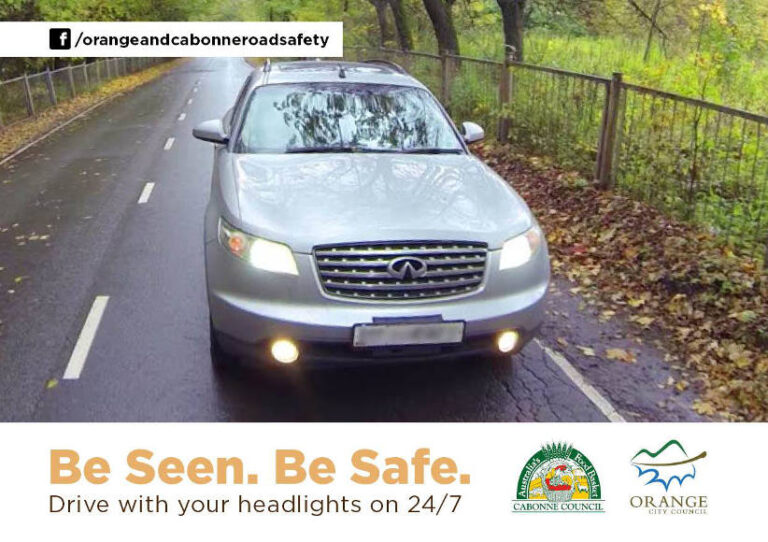– By Caroline Falls –
Two adjoining central west NSW local shire councils recently introduced a lights-on 24/7 drive policy for their vehicles and equipment fleets, dubbing it Be Seen, Be Safe.
“It has been proven that it will reduce fatal and injury crashes,” said Andrea Hamilton-Vaughan, road safety officer for the Orange and the Cabonne shire councils. The policy is a simple, cheap and effective way to reduce road death and injury, that governments of all stripes, in the country, in cities and around the world, can use.
International research shows enhanced visual accuity, and brain processing, when a vehicle’s lights are left on, even during daytime driving, said Hamilton-Vaughan, adding, “It makes it much clearer to the brain.”
Hamilton-Vaughan cited research estimating turning headlights on could cut the number of daytime multi-vehicle fatal crashes by 25 percent and injury crashes by 20 percent. Fatal pedestrian crashes could be reduced by 28 percent.
“I would advise all fleets to adopt the policy,” said Hamilton-Vaughan, “It costs them nothing and it will reduce their crashes.” She was unaware of adoption rates of a lights-on policy among local councils, or fleets generally.
Driving with the lights on is a policy all fleets shoud have, agreed Rob Wilson, a director at 4C Management Solutions and head of fleet at IPWEA Institute of Public Works Engineers Australasia, noting a wealth of information about the issue on the internet.
The official introduction of the fleet policy in the central west councils follows a public rollout of a safety awareness campaign around driving with your lights on all the time, using facebook and twitter and other low-cost social media forums, said Hamilton-Vaughan. This campaign launched a couple of years ago was funded by the Centre for Road Safety, NSW.
She said public signage, like she’d seen in a South Australian jurisdiction, while driving across to Perth, also helped advise drivers entering the community of the policy, and to switch on.
“There’s a lot of vehicles coming from outside our area, and we want them to drive with their headlights on too,” said Hamilton-Vaughan.
She said she was talking with heavy vehicle transport operators in the region to bolster take-up of the policy on local roads.
“They are very proactive. Some of them already have that policy because they know the importance and how it can reduce fatal and injury crashes.”
The policy isn’t only relevant to country areas.
“This applies to both country and city driving situations,” said the NSW government transport authority Roads and Maritime Services on their website, acknowledging the safety links.
“Many countries around the world do this,” said Hamilton-Vaughan. “It’s law in some Scandinavian countries to drive with lights on 24/7.”






